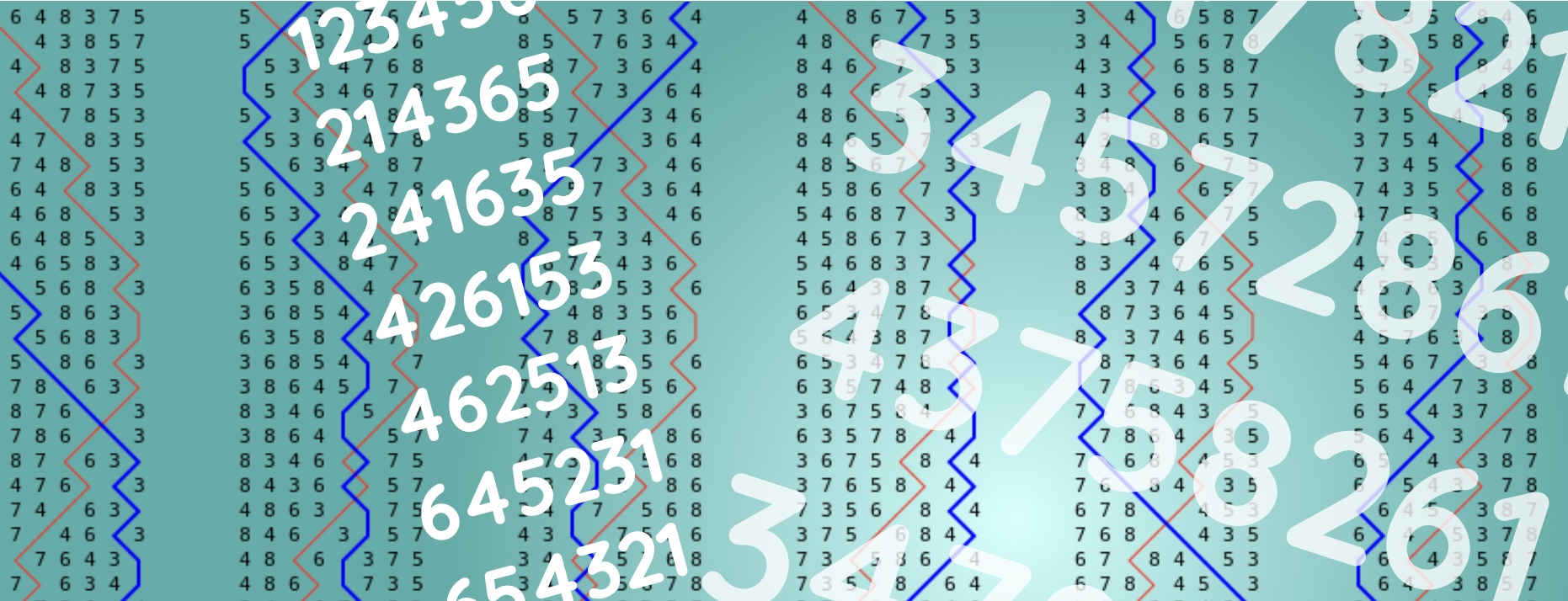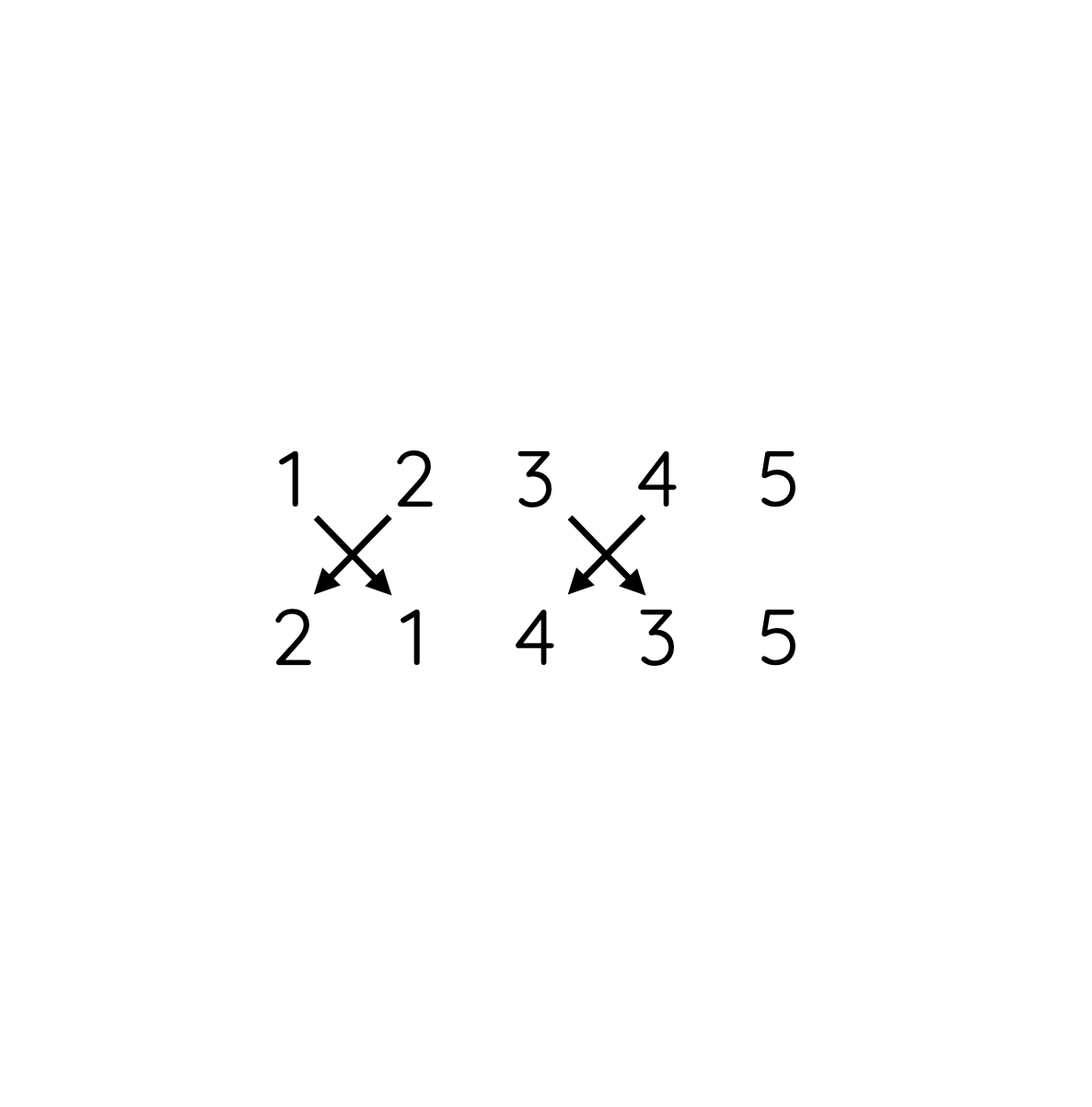
Changes
Bells are big, heavy and cumbersome…
Ringing a lot faster or slower is difficult to do quickly…. So we only change a little bit at a time.
We do this by swapping places with the preceding or following bell.
We therefore have a choice of three options…
-
Ring a bit faster and move one place earlier in the order. (2 & 4)
-
Ring a bit slower and move one place later in the order. (1 & 3)
-
Continue at the same speed and stay in our current position. (5)
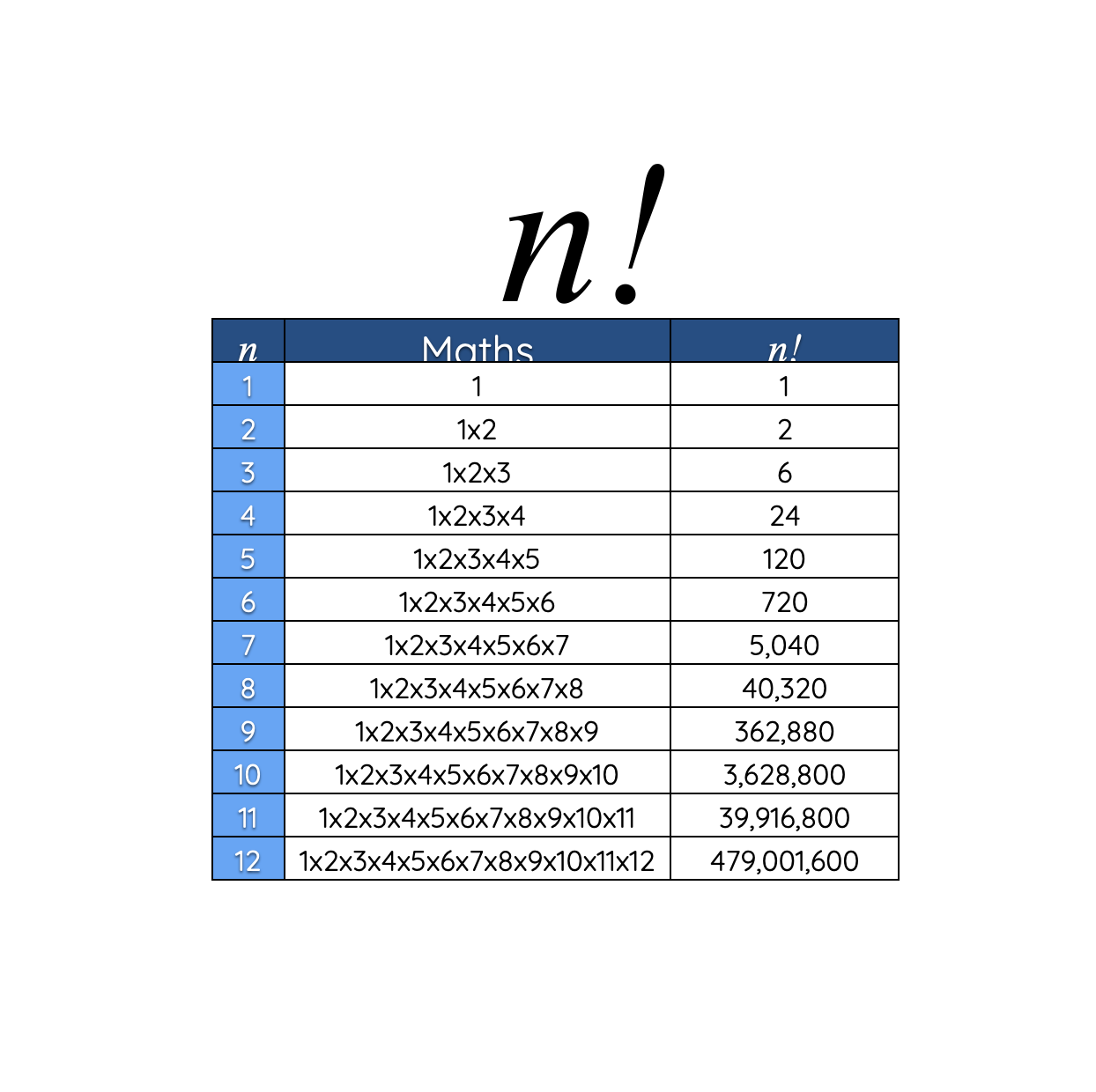
Permutations and Extents
One of the objectives in change ringing is to extract all the changes (musical patterns). The permutations of bell order…
With 2 bells the options are very limited:
- 1-2 (ding-dong)
- 2-1 (dong-ding)!
With three bells we could have both the above options and add in an extra bell last, second and first…. so 6 permutations.
… 123, 213, 132, 231, 312, 321
The maths is actually 1x2x3… and is called a factorial. n! is the symbol used for the maths.
With four bells the factorial maths is n! = 1x2x3x4… or 24. It is all the numbers multiplied together.
Ringing all the possible changes (the factorial) is called an Extent.
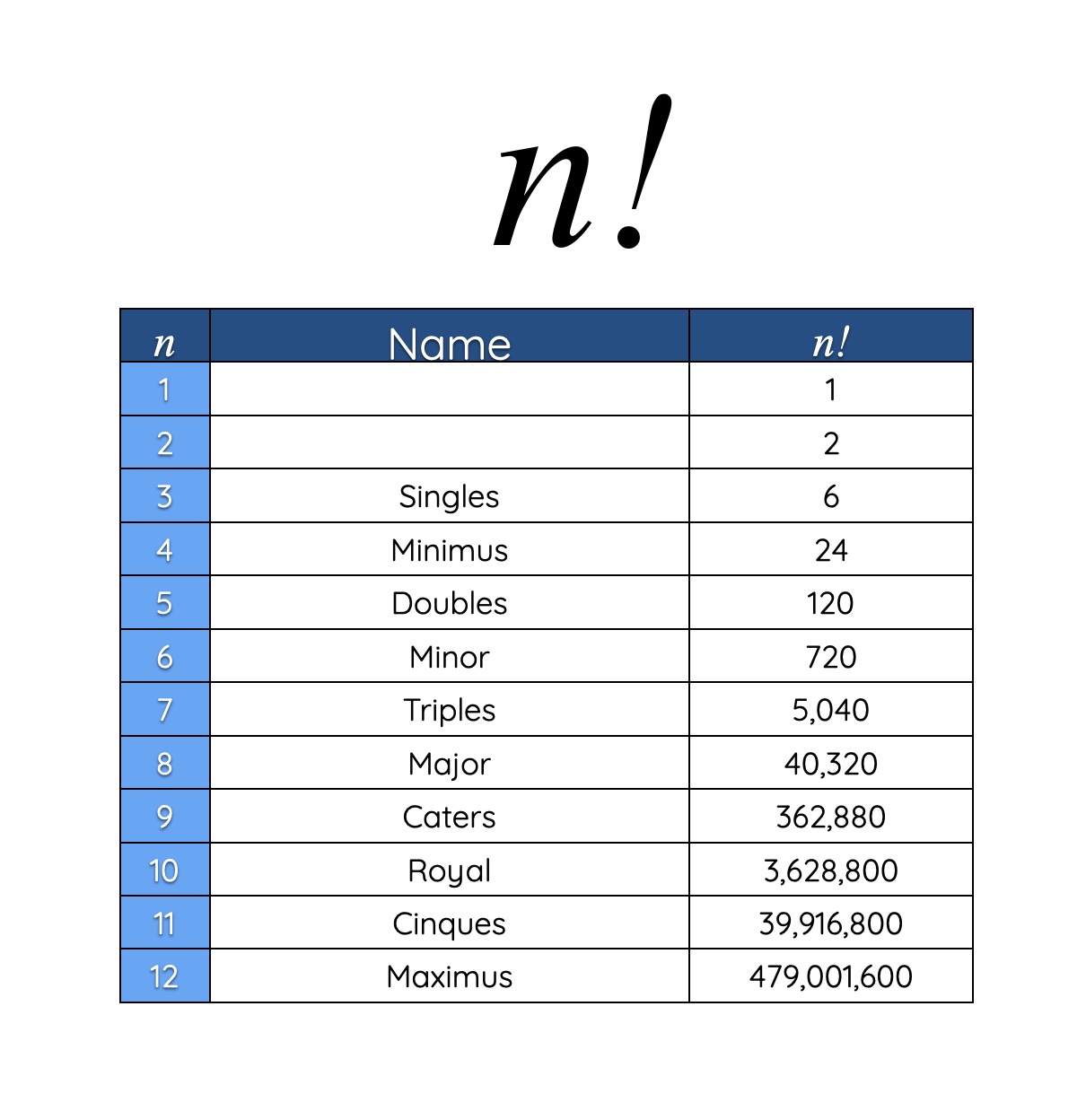
Factorial numbers are ones ringers hear a lot…
120 is the Extent for 5 bells. We call 5 bell methods doubles and regularly ring all the possible changes at a practice, because it only takes about 4-5 minutes to complete.
The Extent for 6 bells is 720 changes… so in a Minor quarter peal, we always need to include at least one complete 720 of changes.
5040 changes is the Extent for Triples (seven bells) and is also the number of changes in a peal. If you ring a peal on 7 bells, it must include all 5040 possible permutations… This generally takes between 2.5 and 3.5 hours!
Beyond that we have names, but do not ring extents… The factorials are very big numbers and ringing all the changes would be complete madness!
Ringing an extent of Maximus (12 bells) would probably take about 34 years… assuming you didn’t stop for lunch!
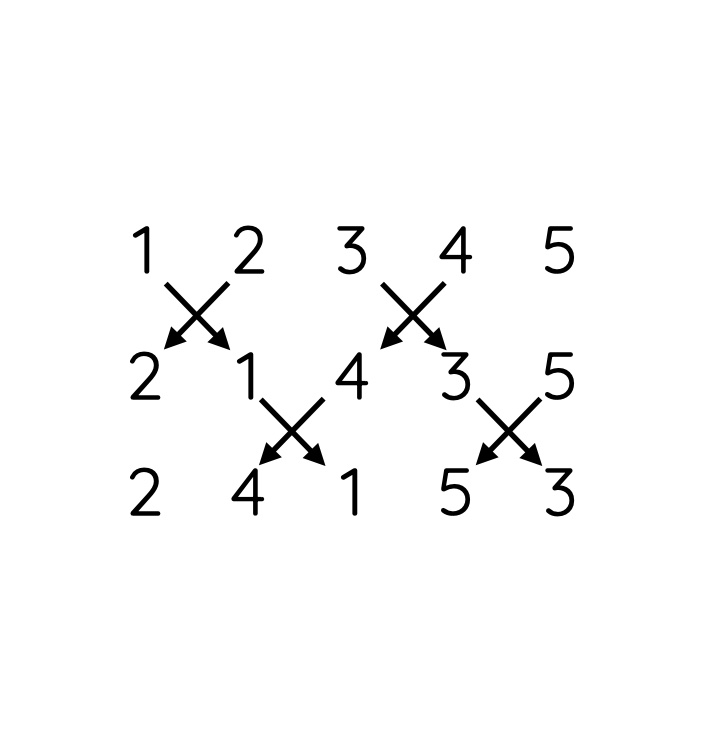
Doubles
If we have 5 bells we can move 2 pairs of bells with one left over.
In the next row, we can again move 2 pairs… but perhaps leave out a different bell.
Moving 2 pairs of bells mean we are making 2 sets of changes in each row… hence the term doubles.

Triple, Caters and Cinques
With an odd number of bells we can can extend the doubles idea very easily… The more bells we have – the more pairs we can switch.
With 7 bells we can switch up to 3 pairs of bells… Hence Triples…
In Caters (nine bells), it is 4 pairs. (from French quatre)
For Cinques (pronounced ‘sinks’)… 5 pairs. (…also from French)
If we only have 3 bells, we can only swap one pair of bells… We call this singles… but we do not ring three bells very often!
This naming structure goes right back to the earliest days of change ringing in the 1600’s and Fabian Stedman’s development of the art.
In those early days, it was normal to only ring an odd number of bells and if an even number were available, to use the last bell as a cover, which means it is not included in the changes and always last…. providing a steady beat and reference point.
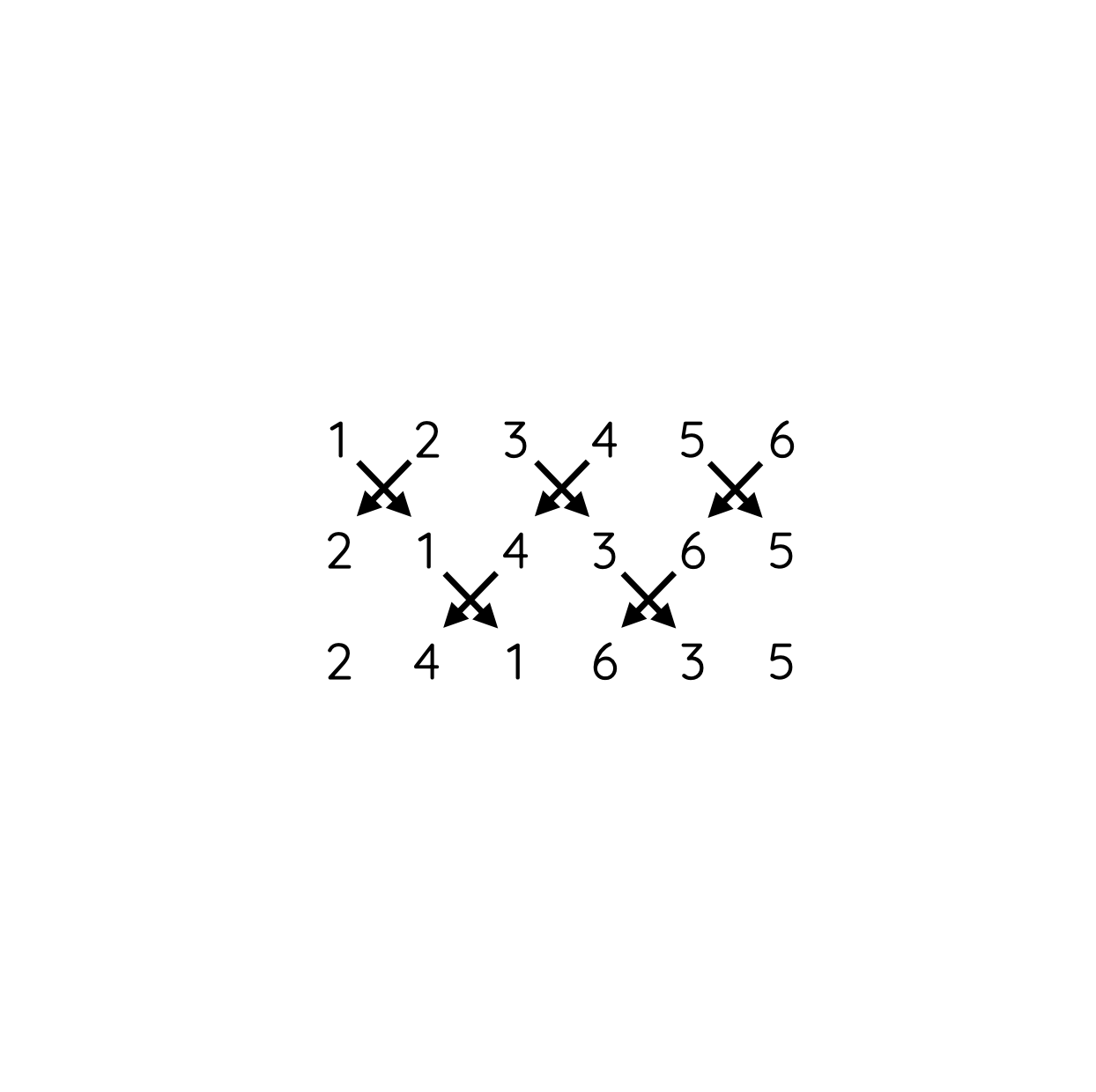
Even Bell numbers
As time passed, people gradually started ringing with even numbers of bells….
With an even number of bells in the change, it is possible to swap all the bells at the same time… so on the next row, a different plan needs to be applied, or the changes would be somewhat short-lived!
As an alternative, we swap the inner pairs of bells.
In Tintinnalogia… Fabian Stedman’s first book about change ringing… Plain Bob on 4 bells was described as ‘Doubles and Singles’…. because it swapped either 2 or 1 pair of bells.
If you expand this idea, six bell methods would be ‘Triples and Doubles’ and eight bells methods – ‘Caters and Triples’.
Nice idea! …but this naming strategy was clearly never going to catch on…. A different system would be needed for even bell methods!

Minimus to Maximus
Gradually, a new set of names developed… this time from latin…
Minimus was used for 4 bell methods, on the basis that it is really the starting point for even bell method ringing…
Minor signified 6 bells and Major for 8…
Royal was used for 10…. Not latin, but possibly because it was first used for royal occasions… or just sounded splendid?
Maximus was used for twelve, on the basis this was the largest number of bells anywhere.
Rules, of course, are there to be broken and St Martin’s in Birmingham augmented to 16 bells some years back, however… any method over twelve is imaginatively called fourteen, sixteen, etc. but is an absolute rarity anyway.
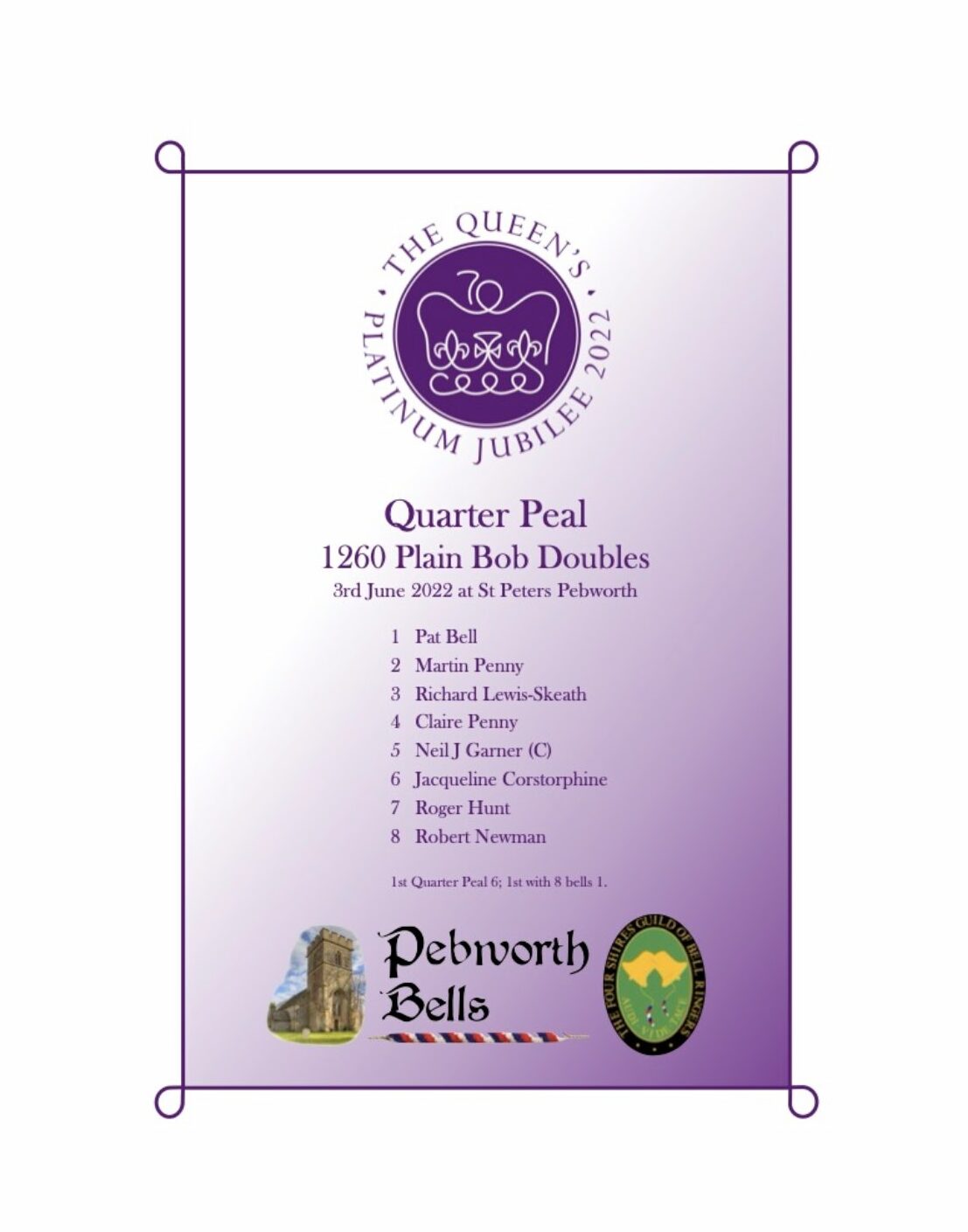
Quarter Peals
A Quarter Peal is exactly what it says… a quarter of 5040 (a peal)… or 1260+ changes.
This is a real achievement for a developing ringer, but does not require the level of commitment, concentration and single mindedness that a peal needs.
At around 35-55 minutes, it is an ideal performance length for services and other special occasions where time might be limited or accuracy for the finish time is important.
Opposite, you will see a Quarter Peal certificate for a QP that was rung for the Platinum Jubilee.
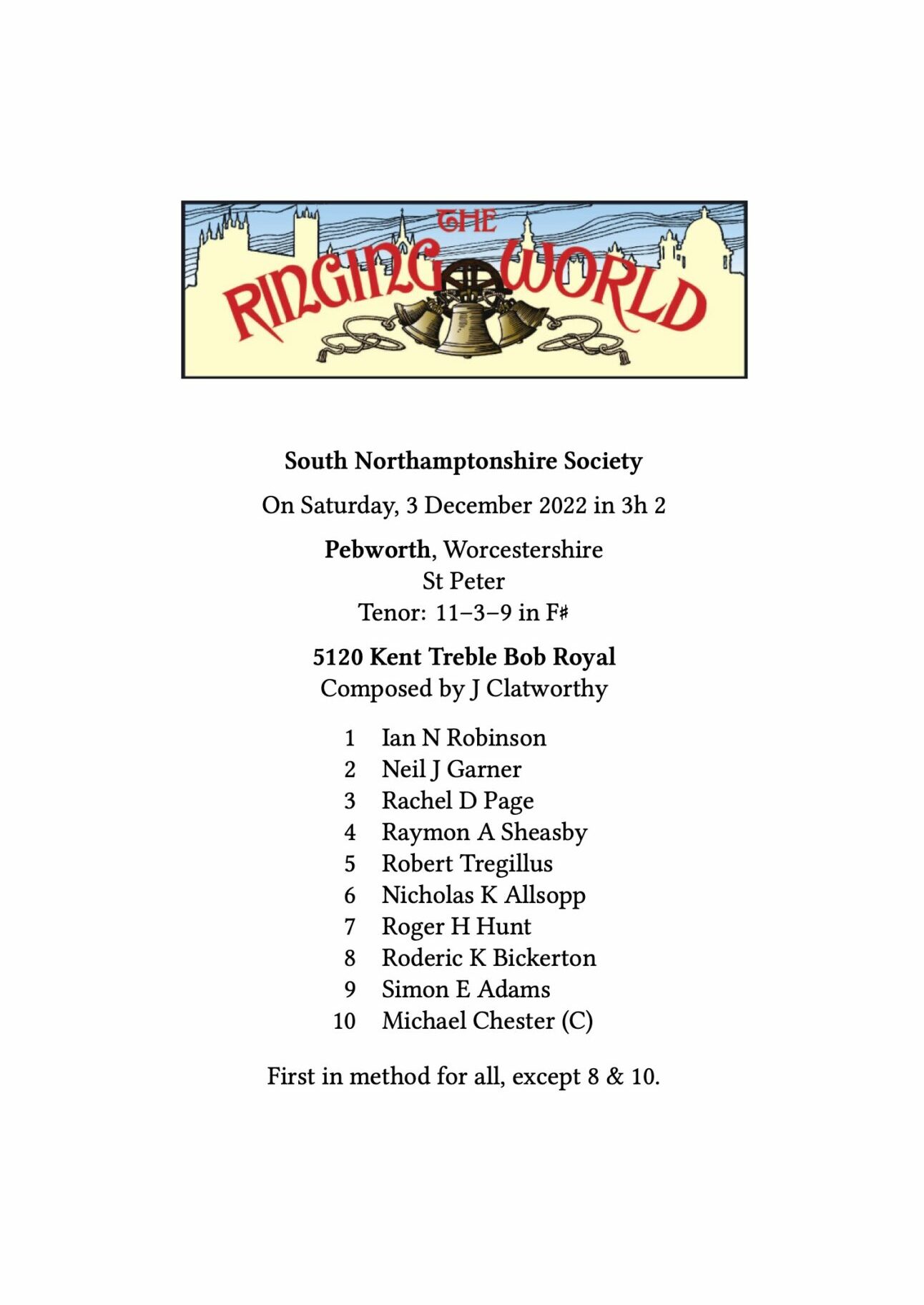
Peals
A peal is a major benchmark and achievement for any ringer, as it requires concentration and physical effort for a very long time. It is often used for special events or occasions… so you may well see peal boards commemorating important events on the belfry wall.
-
We have already mentioned that a peal is nominally 5040 changes – the same as factorial 7 (Triples).
-
For lesser numbers of bells, a peal is still considered to be the same length….5040 changes,
-
so for minor, you need to ring 7 complete extents (7 x 720)…
-
for doubles 42 extents (42 x 120)
-
and minimus 210 extents (which is a bit repetitive to say the least!)
-
-
Often, ringers will ring a different method or composition for each extent, which helps to maintain concentration.
-
For 8 bells and above, ringing an extent is not feasible, so a peal is set at anything above 5000 changes, as for many methods, 5040 is not a mathematically sensible number to use.
-

